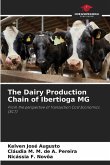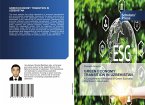Despite its small pasture area for livestock, Uzbekistan´s dairy output is the highest in the Central Asia. In producing dairy products different types of agricultural producers are involved, e.g., around 95% of all cattle is owned by rural households (dekhqans), and 5% belong to the large-scale private farms (ferms) and agricultural producers/cooperatives. Production of milk involves interaction of different dairy producing as well as various risks such as price variability, weather changes, animal diseases, as well as uncertainty in policies during the transitional stage of Uzbekistan's economy. As a result of risks the interactions among producers may reduce, which consequently can decrease the dairy production. This work might be interesting to people who want to have more elaborated vision of Uzbek dairy value chain from perspectives of farmer and milk processor.
Bitte wählen Sie Ihr Anliegen aus.
Rechnungen
Retourenschein anfordern
Bestellstatus
Storno








